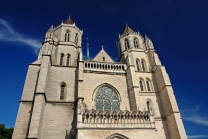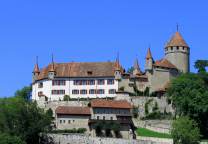Citadel of Besançon

Citadel of Besançon
The Citadel of Besançon (French: Citadelle de Besançon) is a 17th-century fortress in Franche-Comté, France. It is one of the finest masterpieces of military architecture designed by Sébastien Le Prestre de Vauban. The Citadel occupies 11 hectares (27 acres) on Mount Saint-Etienne, one of the seven hills that protect Besançon, the capital of Franche-Comté. Mount Saint-Etienne occupies the neck of an oxbow formed by the river Doubs, giving the site a strategic importance that Julius Caesar recognised as early as 58 BC. The Citadel overlooks the old quarter of the city, which is located within the oxbow, and has views of the city and its surroundings.
The fortification is well preserved. Today it is an important tourist site (over a quarter of a million visitors per year) due both to its own characteristics and because it is the site of several museums. These museums include a museum of the Resistance and deportation, a museum focusing on traditional life in Franche-Comté and the region's archeological history, and a museum of natural history that includes a zoo, an insectarium, an aquarium, vivariums, a noctarium, a climatorium, a pedagogical exhibit on evolution, botanical gardens, and a children's farm. There is also a restaurant and shops.
On 7 July 2008, UNESCO listed the Citadel, together with nearby Fort Griffon, as a World Heritage Site. Since 1942, the...











